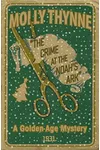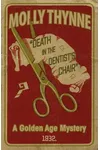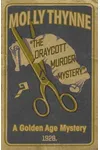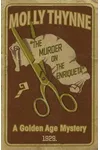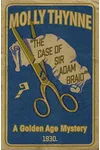Picture an English aristocrat spinning tales of murder and mystery in the cozy glow of the Golden Age of detective fiction—meet Molly Thynne! Born into nobility, Thynne crafted six exquisite mystery novels between 1928 and 1933, including the beloved Dr. Constantine series. Her stories, laced with aristocratic charm and cunning plots, capture the essence of a bygone era, yet her brief literary career remains as intriguing as her whodunits.
Thynne’s life was as fascinating as her fiction. With a knack for blending high-society insights with intricate puzzles, she left an indelible mark on the genre, only to step away from writing at the height of her powers. Let’s dive into the world of this enigmatic storyteller!
The Making of Molly Thynne
Mary Harriet 'Molly' Thynne was born in 1881 into the upper echelons of English society, the great-grandchild of the 2nd Marquess of Bath. Growing up in Kensington, she rubbed elbows with literary giants like Rudyard Kipling and Henry James, thanks to her family’s artistic connections, including her great-uncle, painter James McNeil Whistler. Her childhood visits to the studio of etcher Sir Francis Seymour sparked a creative streak, though her noble roots tied her to Longleat, one of England’s grandest stately homes.
Thynne’s writing career began with her 1914 novel, An Uncertain Glory, but it was the allure of crime fiction that defined her legacy. In 1928, she debuted her mystery prowess with The Draycott Murder Mystery, launching a whirlwind five-year run that showcased her knack for suspense and social nuance.
Molly Thynne’s Unforgettable Stories
Thynne’s six mystery novels are gems of the Golden Age, blending clever plotting with the elegance of her aristocratic world. Her first, The Draycott Murder Mystery (1928), published as The Red Dwarf in the UK, introduced her flair for implicating high-born suspects in scandalous crimes. The Murder on the Enriqueta (1929) thrilled readers with a bold plot set partly at sea, weaving inheritance and deception into a gripping tale.
Her crowning achievement, the Dr. Constantine series, began with The Crime at the Noah’s Ark (1931), a snowed-in inn mystery where the chess-loving Greek sleuth teams up with Scotland Yard’s Inspector Arkwright. Death in the Dentist’s Chair (1932) delivers a chilling locked-room puzzle, while He Dies and Makes No Sign (1933) caps the trilogy with a complex web of deceit and murder, praised for its thrilling pace and darker tone. Thynne’s style—witty dialogue, vivid settings, and puzzles that tease the mind—makes her stories timeless, though her limited output adds a layer of mystique.
Her novels often drew on her background, with aristocratic characters and settings that felt authentic yet accessible. Critics lauded her, with one 1930 review calling her 'perhaps the best woman-writer of detective stories,' a testament to her skill in a genre dominated by names like Agatha Christie.
Why Molly Thynne Matters
Molly Thynne’s impact lies in her ability to craft mysteries that balance intellect and intrigue, offering a window into the social dynamics of 1920s and 1930s England. Her Dr. Constantine, a cerebral yet relatable sleuth, stands alongside the era’s great detectives, earning praise from contemporaries like Charles Williams, who compared him to the best in British crime fiction. Her work, though scarce, has been revived by publishers like Dean Street Press, delighting modern readers with its charm and sophistication.
Thynne’s brief career and retreat to a quiet life in Bovey Tracey, Devon, where she died in 1950, only deepen her allure. She reminds us that even lesser-known voices can leave a lasting echo, inviting readers to savor the elegance of Golden Age mysteries.
- Born: 1881, Kensington, England
- Key Works: The Draycott Murder Mystery, The Crime at the Noah’s Ark, He Dies and Makes No Sign
- Notable: Never married, lived in Bovey Tracey, Devon
Snag The Crime at the Noah’s Ark and dive into Molly Thynne’s delightful world of Golden Age mysteries—your inner sleuth will thank you!
